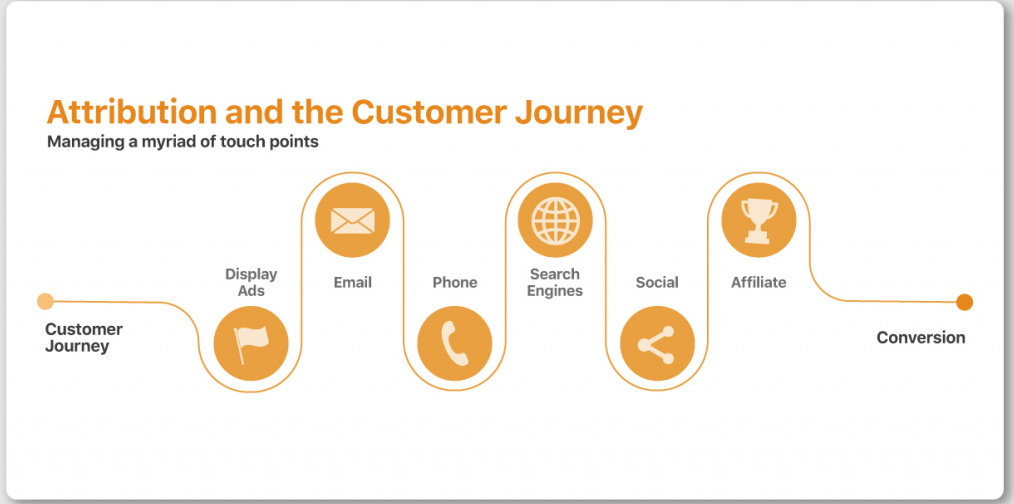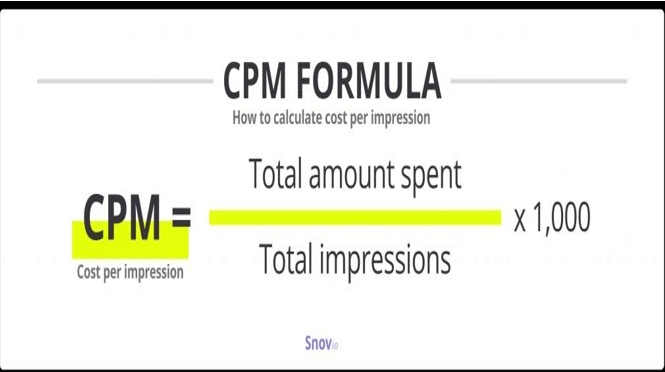Out-of-home (OOH) advertising has been a dedicated landscape for marketing for decades. It focuses on connecting consumers to products while they are away from home. This medium seized approximately five percent of the global ad spending in 2022, making it superior to radio and print. Enclosed by various media formats, not excluding traditional and digital billboards, posters, transit displays (located on and inside buses, trains, trucks, and airplanes), as well as place-based media located in public facilities, stores, and other commercial establishments. Whether it’s billboards towering located over highways, transit ads on buses, trucks, and trains, or posters in public spaces, OOH has demonstrated its capacity to capture attention and convey messages to multiple audiences.
This is because as the marketing landscape progresses, so does it indicate the need for advanced analytics to measure these campaigns’ success and return on investment (ROI). Opposite to the common misapprehension among marketers that outdoor advertising lacks measurable performance metrics, which is the belief that out-of-home measurement is limited to basic reporting on awareness-centric factors such as impressions, reach, and frequency linked with specific demographics has now become a mistaken notion. This belief could no longer hold sway because with AdQuick, which gives marketers the capacity to track and isolate OOH, as it directly slots online and offline conversations, measuring real ROI via diligent examination, comparing relative performance par unit, and raising campaign performance in other to improve outcomes for both digital and static OOH media, giving advertisers the ability to now enjoy OOH measurement on par with digital media.
Metrics for OOH Advertising Campaigns
Metrics for measuring the effectiveness of the OOH Advertisement campaign are as follows:
Impressions and Reach
- Impressions refer to the number of times an ad is likely to be seen, it supplies a basic measure of visibility.
- Reach expands the concept of impressions by quantifying the unique audience exposed to the ad. For a targeted campaign understanding the demographics of this audience is key.
Location Data
Making use of GPS and other locational-based technologies, OOH analytics can provide insights into the effectiveness of ad placements. Analyzing foot traffic, dwell times, and demographics in specific locations helps marketers redirect their strategies.
Creative Analysis
Aside from placement, the content of the ad itself plays a vital role. As analytics can estimate the effectiveness of creative elements, such as color schemes, messaging, and visuals, to enhance campaigns of the future.

Source: Freepik
Engagement Metrics
In the case of interactive OOH campaigns, trailing engagement metrics is indispensable. Which includes actions like scanning QR codes, interacting with touch screens, or participating in augmented reality experiences.
Social Media Integration:
Keeping track of social media platforms for mentions, shares, and user-generated content that are linked to OOH campaigns provides additional insights. This does not only measure the campaign’s reach but also sizes audience sentiment.

Source: Freepik
KPIs for the OOH Advertising campaign
Key Performance Indicators (KPIs) play a vital role in ascertaining the success of any advertising campaign, including Out-of-Home (OOH) advertising. Engaging KPIs enables advertisers to monitor particular metrics, as it enhances insights into the campaign’s performance. Within OOH advertising, KPIs zero in on key aspects such as brand awareness, purchase intent, foot traffic, and return on investment. OOH ads analytics can be seen in the following key matrices:
Brand Recognition and Recall
Because the recognition and recall of a brand within an advertisement are important metrics. Key Performance Indicators (KPIs) for assessing brand awareness and recall may involve surveys and focus groups, thereby measuring the extent to which viewers remember the advertisement thereby linking it to the brand. Additionally, tracking social media engagement, such as shares and likes, serves as another KPI to measure brand awareness.
Purchase Intent
Purchase intent indicates which is the Chance of a viewer to purchase after coming in contact with an advertisement. KPIs for examining purchase intent can include surveys and website traffic data. Which keeps watch on the number of viewers visiting a website or making purchases after being exposed to an OOH advertisement.
Foot Traffic and Sales
Foot traffic and sales Lift measures the increase in the number of individuals visiting a physical location or completing a purchase following exposure to an OOH advertisement. KPIs for evaluating foot traffic and sales lift may include sales data and location-based analytics, tracking the number of visitors to a specific location before and after an OOH advertising campaign.
Share of Voice (SOV)
Share of Voice (SOV) indicates the percentage of advertising within a particular market or industry assigned to a specific brand or company. KPIs for assessing SOV may involve surveys and data analysis, tracking the percentage of viewers who remember a particular advertisement or associate with a particular brand.
Return on Advertising Spend (ROAS)
Return on Advertising Spend (ROAS) signifies the revenue generated for each dollar spent on advertising. KPIs for measuring ROAS can include sales data and website traffic analysis, comparing the revenue generated by an OOH advertising campaign to the amount spent.
Brand Favorability and Sentiment
Brand favorability and sentiment measure the extent to which viewers perceive a brand after exposure to an advertisement. KPIs for assessing brand favorability and sentiment include surveys and social media analytics, which monitor the number of positive and negative comments and reviews associated with a specific brand or campaign.
Measuring Effectiveness of OOH Advertisements Campaign
Attribution Analysis
Applying attribution models helps marketers connect OOH efforts to specific outcomes. Whether it’s online conversions, website visits, or app downloads, attribution models attribute success to the right touchpoints. Attribution analysis is seen as one of the most powerful tools in a performance marketer’s toolkit because it uncovers insights that can be used for campaign optimization. Attribution answers the question: “What units performed better than others, and what learnings can I use to improve outcomes on my next campaign?”.

Source: Google
Surveys and Feedback:
Direct feedback from the audience can’t be overestimated. Applying surveys and collecting qualitative data allows marketers to gauge the impact of OOH campaigns on brand perception and purchase intent.
Data Integration:
Combining OOH analytics with other marketing channels provides a comprehensive view of the customer’s journey. Comprehending how OOH interacts, helps refine overall marketing strategies.
A/B Testing
Testing different creatives, messages, or placements in controlled environments allows marketers to identify the most effective elements. A/B testing is a powerful tool for continuous improvement. To measure the effectiveness of OOH and enhance the return on investment (ROI) in Out-of-Home (OOH) campaigns, businesses should contemplate conducting A/B tests with diverse creatives. Implementing distinctive tracking phone numbers or employing specific call-to-action URLs in varying creatives enables businesses to quantify the efficacy of each variation. This data serves as valuable guidance for future OOH campaigns, facilitating the strategic allocation of resources toward the most successful creatives.
Measuring ROI
Measuring the Return on Investment (ROI) for Out-of-Home (OOH) advertising involves a strategic approach that considers a range of factors.
The basic formula for calculating ROI is (Net Profit/ Cost of Investment) x100.
Net profit is the revenue generated minus the total cost of the campaign. This formula provides a percentage representing the return on investment.

Optimizing OOH Advertisement ROI
In 2020, significant transformations have unfolded in out-of-home (OOH) advertising, forcing brands to quickly adjust to the evolving consumer behaviors. The imperative to adapt to these changes shows emphasizes the increased significance of utilizing innovative, data-driven technologies. This approach is crucial for ensuring that your message reaches the intended audience, allowing for the optimization of return on investment (ROI) in your advertising campaigns.
When delving into the realm of OOH advertising, the concept of cost-per-thousand cannot be overlooked. However, it is not the sole determining factor. Contextualizing the data becomes essential, involving an examination of past performance, benchmarking outcomes against market standards, and finding a harmonious balance between cost per mile (CPM) and ROI considerations. This comprehensive analysis aids in pinpointing the ideal CPM target, thereby influencing your approach to media buying and negotiation strategies.
The following ways can be used to optimize the CPM and get the best ROI from your OOH advertising campaigns:
Redefining your Targeting
Maximizing the return on investment (ROI) in your campaigns hinges on ensuring your ad reaches the intended audience. Otherwise, you may incur expenses for numerous impressions without yielding the desired results. A precision-focused retargeting strategy proves instrumental in connecting with the right audience at the most cost-effective cost per thousand (CPM). For instance, strategically placing a cost-efficient poster ad in a well-chosen location may provide greater exposure to the desired audience compared to investing in a higher-cost bulletin along a freeway.

There exist various methods to target your Out-of-Home (OOH) campaigns, such as:
Targeting by Audience:
Tailoring your audience selection based on demographics, purchasing behaviors, personal preferences, and more. Custom audiences can also be crafted using your existing customer data.
Targeting by Points of Interest:
Opting for ad placements strategically to drive traffic either to your website or to physical locations, catering to specific points of interest for your audience.
Targeting and Retargeting by Location
Using location-based data points to effectively reach consumers in specific regions or geofences. This approach allows for targeted outreach and the opportunity to retarget audiences based on their location.
By adopting these targeted strategies, advertisers can not only enhance the relevance of their campaigns but also optimize their advertising spend by ensuring that each impression has a higher likelihood of resonating with the intended audience.
Dynamic Content and Personalization
Maximizing data analytics gives room for zestful content conveyance which is based on real-time variables like weather, time of day, or current events. While Personalizing messages enhances relevance and increases the likelihood of engagement. On the other hand, by employing innovative technologies and data science, One can effectively engage the right audience at the best moments via Out-of-Home (OOH) campaigns. This is because this approach aims to cultivate brand awareness, steer both online and offline traffic, and provide a seamless customer experience. The main factor for success in OOH advertising lies in ensuring that your ad reaches as many of the right individuals as possible while keeping the lowest cost per thousand (CPM) to reach a robust return on investment (ROI). OOH campaigns hold substantial assurance in terms of potential ROI. On average, every dollar spent on OOH advertising generates $5.97 in product sales. The effectiveness of your advertisements becomes a determining factor in the potential spending they can generate, provided that the equilibrium between ROI and CPM is carefully maintained.
Integration with Digital Channels
Combining OOH campaigns with digital channels like mobile advertising or social media magnifies the outcome. This constructive collaboration creates a seamless brand experience and provides additional avenues for audience interaction.
More alternatives to explore in place-specific Out-of-Home (OOH) advertising, for venues like stadiums, airports, and shopping malls, as well as transit-related options like buses, trucks, transit shelters, and subway stations. These routes enable the conveyance of tailored made and contextually relevant messages. Furthermore, the acquisition of digital displays presents an opportunity to use functionalities such as the display of multiple messages, integration with social media, countdown features, dayparting, real-time updates, conditional content based on weather or temperature, and interactive touch-screen capabilities, among others.
Cost-Per-Impression Analysis:
Calculating the cost per impression (CPI) is essential for understanding the efficiency of OOH Campaigns. Because this metric helps in comparing the cost-effectiveness of different advertising channels.

Source: Google
Real-Time Analytics for Quick Adjustments:
The ability to access real-time analytics allows marketers to make quick adjustments to campaigns. Whether it’s pausing underperforming ads or reallocating the budget to high-performing locations, real-time insights are key.
Long-Term Brand Building:
Although immediate ROI is Important, OOH analytics can also assess the long-term impact on brand awareness and equity. Establishing a connection between OOH efforts and brand perception contributes to sustained success.

Source: Google
Conclusion
Out-of-home analytics has become an indispensable tool for modern marketers that aims to maximize the impact of their campaigns, from traditional billboards to interactive digital displays, therefore understanding the metrics that matter and optimizing ROI via data-driven strategies is crucial. As technology continues to advance, the future of OOH analytics holds exciting possibilities, promising more targeted, efficient, and sustainable campaigns that will captivate the audience and deliver visible results.
Although assessing the return on investment (ROI) of Out-of-Home (OOH) advertising has historically presented difficulties, Movia Media has become a valuable resource for businesses to surmount these challenges. Using Movia Media insights, businesses can gauge the influence of OOH campaigns, redirect their marketing approaches, and amplify their ROI. Movia offers best practices and stays vigilance about the data businesses can use to optimize their OOH advertising and endeavors so that their OOH is not only impactful but also financially rewarding. Are you looking forward to harnessing the potentiality of Out-of-Home (OOH) advertising for your brand but require the necessary tools to execute it effectively, our team of OOH experts is ready to help. Schedule an appointment with our experts and explore great possibilities for your brand!


